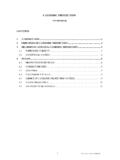Transcription of Corrosion and Cathodic Protection Theory - APE
1 Corrosion and Cathodic Protection Theory by James B. Bushman, Principal Corrosion Engineer Bushman & Associates, Inc Medina, Ohio USA The contents of this white paper including all graphics are protected by copyright of Bushman & Associates, Inc. (B&A), Medina, Ohio USA and may not be duplicated or distributed without the express written permission of B&A. It may be reproduced as a single copy for study and review by any person who downloads the document from B&A s Internet Web Site. BUSHMAN & Associates, O R R O S I O N C O N S U L T A N T SP. O. B o x 4 2 5 M e d i n a, O h i o 4 4 2 5 6P h o n e: ( 3 3 0 ) 7 6 9 - 3 6 9 4 F a x : ( 3 3 0 ) 7 6 9 - 2 1 9 7 Disclaimer Every effort has been made to ensure that the information contained within this paper is accurate and reliable.
2 However, neither B&A or the author shall not be liable in any way for loss or damage resulting from use of this information or for violation of any federal, state, or municipal regulation with which it may conflict. This B&A technical paper represents the opinion of the author. Its use does not preclude anyone, whether he has adopted procedures from the paper or not, from manufacturing, marketing, purchasing, or using products, processes, or procedures not in conformance with the procedures recommended in this paper. Nothing contained in this B&A technical paper is to be construed as granting any right, by implication or otherwise, to manufacture, sell, or use in connection with any method, apparatus, or product covered by Letters Patent, or as indemnifying or protecting anyone against liability for infringement of Letters Patent.
3 This paper represents the thoughts and opinions of the author and should in no way be interpreted as a restriction on the use of better procedures or materials. Neither is this technical paper intended to apply in all cases relating to the subject. Unpredictable circumstances may negate the usefulness of this technical paper in specific instances. Neither B&A or the author assumes no responsibility for the interpretation or use of this technical paper by other parties. Users of this B&A technical paper are responsible for reviewing appropriate health, safety, environmental, and regulatory documents and for determining their applicability in relation to this technical paper prior to its use.
4 This B&A technical paper may not necessarily address all potential health and safety problems or environmental hazards associated with the use of materials, equipment, and/or operations detailed or referred to within this technical paper. Users of this B&A technical paper are also responsible for establishing appropriate health, safety, and environmental Protection practices, in consultation with appropriate regulatory authorities if necessary, to achieve compliance with any existing applicable regulatory requirements prior to the use of the information contained within this technical paper. CAUTIONARY NOTICE: B&A technical papers are subject to periodic review, and may be revised or withdrawn at any time without prior notice.
5 B&A requires that action be taken to reaffirm, revise, or withdraw this technical paper no later than five years from the date of initial publication. The user is cautioned to obtain the latest edition. Purchasers of B&A technical papers may receive current information on all technical papers and other B&A publications by contacting Bushman & Associates, Inc. at 6395 Kennard Road, Medina, OH 44256 USA Phone: 330-769-3694. This paper is protected by copyright of Bushman & Associates, Inc. A single printout of this paper may be used by the individual who downloaded the document from B&A s website and shall not be further duplicated in any form for distribution, training, publication or for any use other than the edification of the individual who downloaded the document.
6 Page 2 of 10 Bushman & Associates, Inc. Corrosion and Cathodic Protection Theory By James B. Bushman, Bushman & Associates, Inc. Box 425 Medina, Ohio 44256 USA Phone: (330) 769-3694 Fax: (330) 769-2197 I. Introduction Nature has endowed each metallic substance with a certain natural energy level or potential. GALVANIC ENERGY SERIES When two metals having different energy levels or potentials are coupled together, current will flow. The direction of positive current flow will be from the metal with the more negative potential through the soil to that which is more positive.
7 Corrosion will occur at the point where positive current leaves the metal surface. A dry cell battery is one example of a Corrosion cell. COMMON DRY CELL BATTERY DC railways and other machinery often generate direct current. When this current flows through the soil indiscriminately, it is referred to as "stray" DC. The current may contact and follow a buried metallic structure such as a pipeline, but wherever it leaves that structure to return to it's origin, Corrosion will occur. GOLDCOPPERZINCMAGNESIUMALUMINUMCARBONSIL VERPLATINUMSTEELSTEEL IN CONCRETE WITHOUT Cl-STEEL IN CONCRETE WITH + + + + LEVEL IN VOLTS VS Cu-CuSO4 ELECTRODEMETALI ncreasing energy level Cathodic Protection is an electrical method of preventing Corrosion on metallic structures which are in electrolytes such as soil or water.
8 It has had widespread application on underground pipelines, and ever increasing use as the most effective Corrosion control method for numerous other underground and underwater structures such as lead cables, water storage tanks, lock gates and dams, steel pilings, underground storage tanks, well casings, ship hulls and interiors, water treatment equipment, trash racks and screens. It is a scientific method which combats Corrosion by use of the same laws which cause the Corrosion process. II. Corrosion Mechanism CARBONROD(CATHODE)ZINCCASE(ANODE)MOISTPA STE(ELECTROLYTE)WIRE(CONDUCTOR)e-CONVENT IONAL CURRENTZn++ H+OH-OH-e-e-There are two basic mechanisms by which metals in electrolytes corrode Electrolytic Corrosion Galvanic Corrosion Electrolytic Corrosion is a result of direct current from outside sources entering and then leaving a particular metallic structure by way of the electrolyte.
9 Where current Page 3 of 10 Bushman & Associates, Inc. Corrosion and Cathodic Protection Theory by James B. Bushman nters the structure, that part is usually unaffected or is provided with some degree of Protection . Where current leaves the structure, Corrosion occurs. In underground work, this type of Corrosion is often referred to as stray current Corrosion and results from currents entering the soil from sources of DC such as electric railway systems or DC machinery. STRAY DIRECT CURRENT Corrosion Galvanic Corrosion is self-generated activity resulting from differences in energy levels or potentials which develop when metal is placed in an electrolyte.
10 These differences can arise from the coupling of dissimilar metals, variations in the electrolyte, non-homogeneity of the metal, or a combination of the above. BI-METALLIC Corrosion Current will be generated when two dissimilar metals are electrically connected and immersed in an electrolyte. One of the metals will corrode. The path of the current will be from the corroding metal, through the electrolyte (soil) to the non-corroding metal and then back through the connection (conductor) between the two metals. The corroding metal is the one where the current leaves to enter the electrolyte and is called an anode.
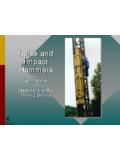
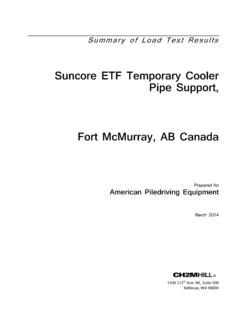
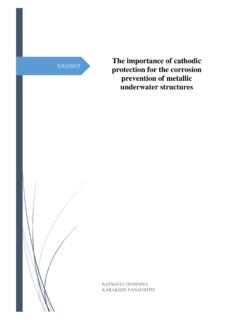
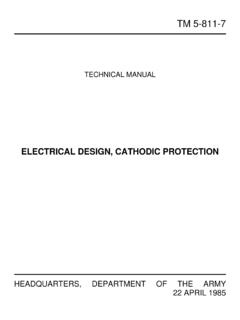

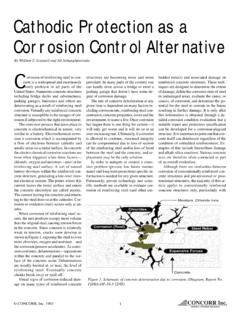
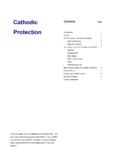



![Corrosion Protection.ppt [Read-Only] - University of Iowa](/cache/preview/1/c/f/9/2/e/d/5/thumb-1cf92ed5cf903dbf2b6cd3a840081a01.jpg)
